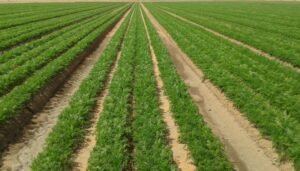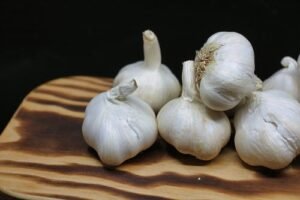Fast growing vegetables Tips & Tricks
Humans are impatient. They are very eager to get things done at the same time. When it comes to gardening, they always want the flowers or fruits the next day they planted it. But it’s said that, ‘Good things often take time’.
We always want our vegetables to grow quickly in our garden and need it on our plates but some vegetables take time to grow and some of them can grow quickly with some modifications & techniques. Some plants have a long growing season and some short growing seasons. There are plenty of fast growing vegetables such as leafy green vegetables, legumes, brassicas and root crops.
Pineapple farming business project report.
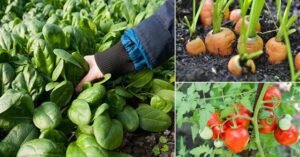
Here we will discuss some tips & tricks for growing vegetables quickly.
Fast Growing Vegetables – Introduction
The vegetables which have a short maturity period or that which can be harvested early are called Fast growing vegetables. The vegetables can grow fast if they are supplied with proper nutrition, care, water & sunlight. Fast growing vegetables can be accompanied by successive plantings in the spring, summer or fall seasons. This will make the gardens more productive and there will be less space for weeds too.
In May & June peas and spinach can be grown followed by some fresh fast growing plants like bush beans, beets and summer lettuce. You can even produce a heavy crop of fast growing vegetables in a short growing season and for growing vegetables speedly, raised beds, containers or fabric bags can be used and to encourage healthy growth of the plants, successive crops can be added with compost.
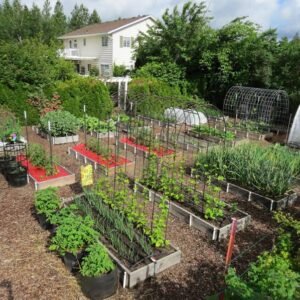
Examples of Fast growing Vegetables & Tips to grow
Ginger farming project report for beginners.
Here is a list of some fast growing vegetables that you can grow in your garden.
- Radishes – It gets ready for harvesting in just 25 to 30 days and can be grown in areas with a short growing season also. Purple plush, Watermelon, Black spanish or French breakfast can be used as quick maturing varieties.
- Green Onions – Onions take about 6 months to mature but green onions can be harvested in just three or four weeks.
- Salad leaves – A variety of lettuce, mustards, oriental leafy salads, kale and arugula can be planted which requires just three weeks to harvest. Sow your seeds using a drill and provide space of around 6 to 10 inches, then recover them with soil and pat the soil gently. Keep the soil moist and weed free and provide shade during hot climates. While harvesting, take 2 or 3 leaves from outside which will help them grow again and produce for the next cut.
- Bush beans – It can be sown directly in the soil or in potting soil pots. Prick the seeds into the soil and then sow a new batch after one month until the summer ends. Pick the pods regularly, it will encourage them in making new pods. Allow 60 days for harvesting.
- Carrots – The correct variety of a carrot can over grow to finger size in 6 weeks. The seeds should be sieved thinly with potting soil before spreading over the surface, and then sow into pots of potting soil spreading them on the surface. Use a row cover to prevent carrot flies laying their eggs. Thinning the seedlings is effective during rainy or cloudy days. Always use a border fork to loose the soil before pulling the tender carrots and harvesting can be done in 50 days.
- Cucumbers – They can be used in various recipes, salads and even pickles. They require plenty of space and if you plant in zones 4-11, you can harvest them in 50 days
- Beets – Sprouts and fall are the best time to grow them because they cannot tolerate the extreme temperatures of summer. It can be harvested in 50 days and the leaves can be harvested in 30 days itself by growing them in zones 2-10.
- Bok Choy – Bok choy is a hardy plant that can be grown well in zones 4-7. It can be harvested after 21 days and the whole head in about 45 to 60 days.
- Okra – You need 50 days to harvest a ripe okra. Zone 3-9 are suitable for its growth.
- Peas – It is an excellent seasonal crop with 13 to 18 degree Celsius temperature to flourish well.It can be grown parallely with a space of 10 cm. Add soil and water well. Cover the plants with trenches with chicken wire or nets to prevent the birds from taking away the seeds. It takes about 60 to 70 days to harvest.
- Turnips – They provide a heavy harvest every year as they can be planted throughout the entire growing season and in most gardening zones. Both the leaves and roots can be harvested for almost all varieties when they become tender and 2 to 3 inches in circumference.
- Spinach – The leaves are smooth, succulent and versatile and can be added to salads or in other dishes. The seeds are planted an inch apart and seedlings 8 inches apart. During hot summers, keep the soil moist and sow in light shade to prevent bolting of the plants. Use sharp knives or scissors to cut away the leaves. Harvest them often, keeping the leaves short. Sow with a row cover or tunnel during cold weather. Harvesting can be done after 30 days.
Commercial brinjal farming project for beginners.
Tips to fast growing vegetables
Growing vegetables fastly requires some basic techniques and ideas. Firstly, the seeds of the crops should be soaked gently in water after covering them with loose soil. Remember to keep the soil always moist because it requires proper moisture to germinate and when the seeds germinate and the saplings have 4 true leaves then it can be transplanted into bigger pots. Plants require direct sunlight everyday for about 6 to 8 hours so ensure to give proper warmth & care.
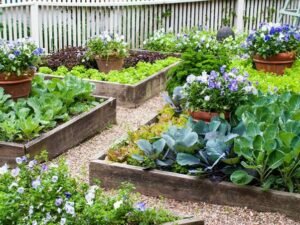
There are some factors on which the growing speed of vegetables depends:
- Maturity – If seedlings are already prepared in the nursery then it takes less time to harvest rather than directly planting the seeds.
- Varieties – The vegetables variety also matters. Climbers grow faster than bush or dwarf varieties.
- Season – The growing period depends upon the season too as the vegetables can grow fastly in summers than winters.
- Soil – The soil should be moist and well drained for better & faster growing. Use compost for poor soils.
- Sunlight – Every plant requires 6 to 8 hours of sunlight so ensure proper warmth to the plants.
- Succession planting – When the vegetables are grown in succession one after another it makes the gardens productive yielding more food and this prevents them from weeds too.
- Watering – Proper watering is important to grow crops as it would cause them to die because of insufficient water. After transplantation plants require enough water and during summers as well.
- Raised beds – Vegetables grow faster in raised beds, containers, or fabric bags.
Best Ways to fast growing vegetables
The fast growing vegetables need to be chosen carefully and despite the time and effort you put into your garden it will take time to grow and any tips or tricks are not possible over here. However, the techniques used by generations of gardeners prove to be effective till today.
Moringa farming guide for beginners.
One thing is very important that the vegetables or any crop requires high quality soil to ensure a healthy and productive garden. During the growing season, soil warming is important and diseases and weeds should be kept away.
Apart from all these your garden should continue to flourish all summer long by following some gardening techniques. Among other gardening techniques, good quality soil, soil warming techniques, and weeds & disease control techniques have proven to be effective in increasing the growth rate of your vegetables. Here, we will discuss some time tested ways to help your vegetables grow faster that have even been used by generations of successful gardeners.

- Land Preparation
Land preparation is the most important step in agriculture. Before sowing your fast growing crops you need to prepare your soil very well. This will help the soil to get enough nutrients to support healthy growth and the right texture which would even encourage germination. Preparing the land is very simple as spraying Organic Fertilizer and then raking it down to a fine tilth. For growing vegetables superfast, a good quality and multipurpose potting soil can also be used.
- Nutrients & Soil
Nutrients are very important for growing plants and vegetables require even more nutrients than most of the plants as they produce large leaves and fruits in just one season. Also a well drained soil can produce vigorous growth which will help you get the desired result. Composting or manure at half to one inch depth per year will enhance the productivity of your garden and soil gains more nitrogen and drainage of the soil is also improved.
Thus the plants get a sufficient amount of Oxygen as well. For fertilizing the garden soil with nitrogen, you can add about 2 pounds of Ammonium Phosphate for every hundred square feet of area. It is better to give early attention to your soil so that it can make a significant difference to the growth in your garden.
How to prepare best kitchen garden?
- Sunlight & Warmth
Plants require a sufficient amount of sunlight & warmth everyday to grow well. The temperature in the soil as well as air should be maintained well to ensure proper growth and germination of seeds because in cold climates, the seeds can rot or not germinate properly.
This will fail them in producing fruits in cold soil and eventually it may result in no fruits at all. Soil warming during spring is thus essential with raised beds or floating row covers. Raised beds warm up more quickly and can hold the heat even better than the soil and it helps the seedlings mature more quickly.
If you live in colder regions, you can consider growing in greenhouses providing the required amount of warmth and other resources as well. It can also be beneficial in extending the season if you live in areas with a short growing season.
- Water Practices
Without proper irrigation, plants can not grow faster. Plants require a sufficient amount of moisture and in the absence of this, it will grow slowly and even produce low quality crops. Drip system or soaker hoses should be used in spite of overhead sprinklers to reduce water consumption and this also helps in reducing the diseases caused by wet leaves.
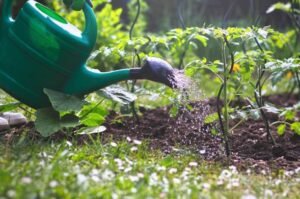
Ensure that the soil receives water before getting dried. For this you can check by touching the soil or install moisture meters which can alert you for dryness of the soil. The soil should be kept moist but avoid over watering it.
- Weed & Pest control Measures
It feels so bad that you invested so much of your time & effort in your garden and then the weeds and pests ruin your plants and everything goes in vain. So it’s better to take proper measures to control these weeds and pests before they harm your plants.
How to do green house farming?
You should spend some time every week to weed your garden. To control the weeds, you can use straw or untreated glass clippings and then detect possible diseases and insects that could cause harm and treat them.
By removing the infected plant, the diseases could be controlled. You can even do crop rotation to reduce these diseases or any related problems and always use disease resistant varieties in your garden. For aphids & leafhoppers, insecticidal soaps or oil can be used. Pyrethrum and Bacillus thuringiensis is effective in treating dangerous beetles and caterpillars.
- Natural Fertilizers
Fertilizers are very effective in enhancing the growth of a plant so choosing the right variety of fertilizer is also very important. A balanced organic fertilizer such as compost can help the plants get the proper nutrients and it will not affect the sensitive veggies as well.
- A Careful & Creative plan
Before plantation, understand the location and availability of the resources. Choose the right variety of the vegetables to be planted and make proper planning beforehand. Make the best use of your space without overcrowding it.
The plants can be planted in a triangular shape. This will help in easy pollination and will ensure maximum utilization of your space as well, enabling faster & efficient harvest.
Also choose compatible pairings of the crops that naturally complement each other such as beans and corn. This will help them in working together towards repelling pests, providing nutrients or retaining moisture.
Best farmingv method to grow garlic.
Conclusion
Fast growing vegetables have a lot of good reasons but you need to properly understand why you need them in your garden. They help in increasing the yields and if you are using a greenhouse it will help you get lots of plants. You will also get huge profits as well with every square foot of your growing area. But most importantly, you need to plan everything carefully so that it could earn you more rather than giving you losses.



